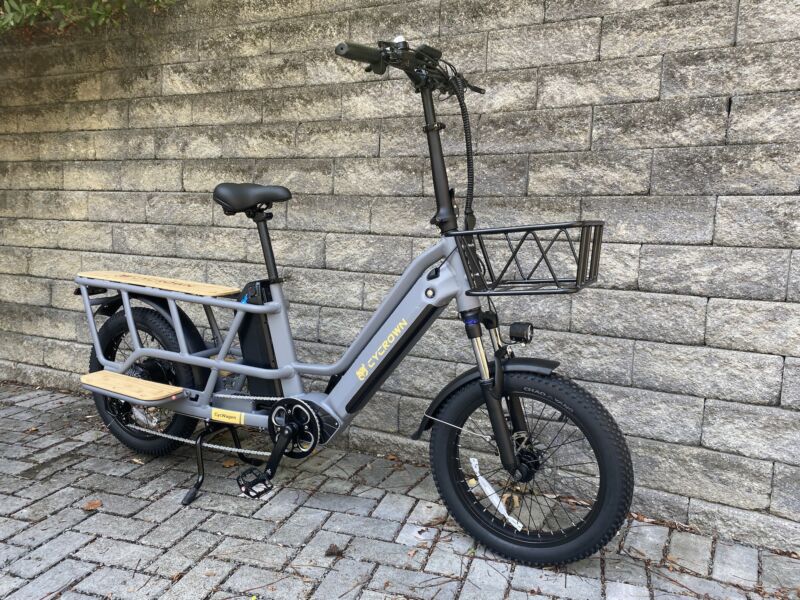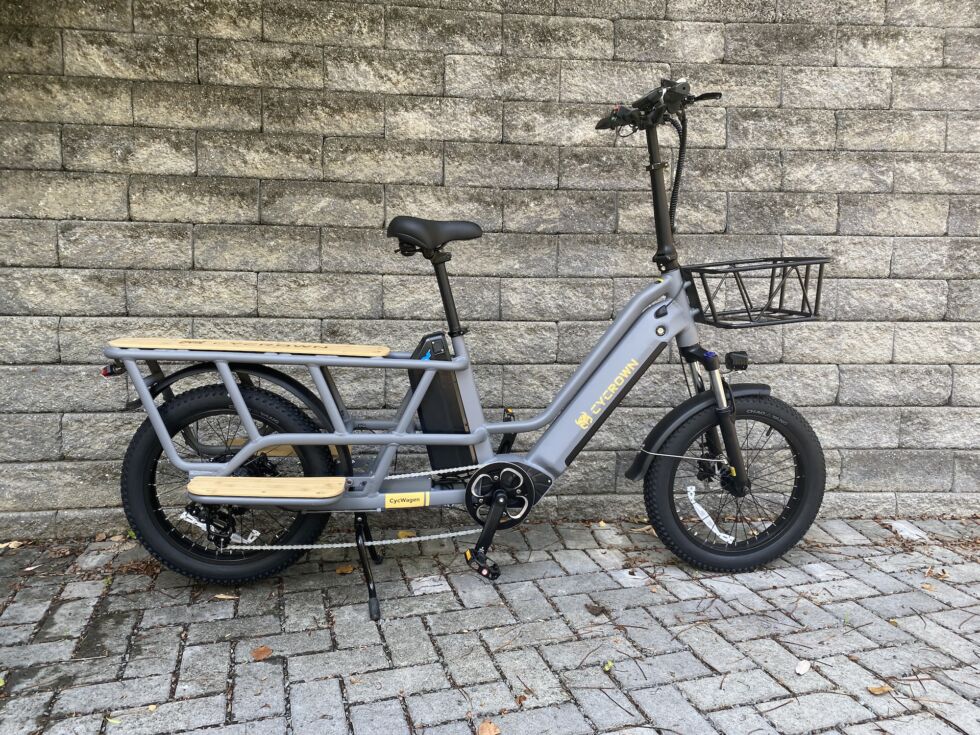Sometimes, you get what you pay for —
A budget offering with a torque sensor (good!) and a whole lot of issues (not good).

Enlarge / The CycWagon.
John Timmer
More so than most other forms of bicycle, cargo bikes are specifically designed to make ditching a car easier. Whether hauling groceries or kids, they can handle a lot more of the day-to-day errand running than most other forms of two-wheeled transport. The problem with some of the higher-end cargo bikes is that the upfront costs can be competitive with a decent used car (although operating costs will be dramatically lower) without offering quite the flexibility that a car might.
Fortunately, as Beth Mole discovered, you don’t necessarily have to spend that much to get a decent riding experience, putting cars at a further disadvantage. That left me curious as to what the price floor for a decent cargo bike might be—how little can you pay and still get a satisfactory experience? I was also keen for a second try on my experiment of going a month without using a car, meant to happen during my earlier review but interrupted by wildfire smoke.
All of which explains why I took delivery of a $1,500 cargo bike called the CycWagon, from a company called Cycrown. It’s currently well on its way toward getting me through a car-free month, but it has… well, a lot of issues.
Evoking wagons of my past
The CycWagon is a long-tail cargo bike, meaning its frame extends well to the rear of the seat, providing an area where you can fit people or packages, depending on whether you set the area up with seating or cargo-carrying hardware. They’re generally not very good as all-around bicycles. For starters, to keep the center of gravity low, they tend to use wheels with a smaller circumference that alters the handling. The longer space between the wheels also requires a relatively rigid frame, and that can translate more of the road’s bumpiness directly to your body. Depending on what attachments you’ve got on the back, they can also be considerably wider than a normal road bike, which is something to take into account while riding.

Enlarge / I liked the wood panel aesthetic, but gradually found myself removing them for various reasons.
JOHN TIMMER
The CycWagon does make some adjustments to make the ride a bit smoother. For starters, it has a front suspension that definitely soaks up some of the road’s roughness. Wide tires that can be run at low pressures improved the situation as well. And I definitely got the sense that the rear of the frame was a bit more compliant than the Trek cargo bike I had tried a year earlier. So, overall, it was a much less jarring ride.
I cannot, however, call it a better ride because of the various decisions made by Cycrown. For starters, the company went a bit too far in trying to keep the center of gravity low, in that the cranks were low enough to the ground that the pedals would scrape pavement if you tried to lean into a turn while pedaling. I gradually adjusted to remembering to stop pedaling when turning, but by that time I had scraped the finish off of both sides of both pedals, leaving bare metal exposed.
I have gotten quite used to e-bikes that are rated for my height but don’t fit my legs, but the CycWagon’s seat was so low that my thighs were horizontal while pedaling, leaving me feeling like I had just shoved a small kid off their bike and taken it for a spin. The low seat was oddly paired with handlebars from a foldable bike, for reasons that mystify me. This does allow you to fold them down, but it’s not obvious to me when that would be useful. But it also positions the grips a bit far forward, making the riding stance even more awkward. Still, the handlebars do come with a vertical adjustment, so it’s possible to find a reasonably comfortable arrangement.

Enlarge / Even at its maximum extension, the seat was very low and close to the pedals, which were in turn very close to the ground.
John Timmer
There’s probably no way to make a long-tail a fun ride, but all of these design choices made the ride more awkward than it needed to be and more than offset the cushiness that the tires and front shock offered.
The bike itself was a fairly utilitarian gray. But it came with a wooden panel for the deck of the cargo area, and there are two optional foot rests that can be installed on either side of the rear wheel that are also topped with wood. Maybe it’s nostalgia for the cargo wagons of my youth, but I liked the mixed metal/wood look. Unfortunately, I gradually discovered that all of that wood had to go.